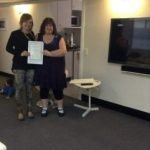Virtual Reality
Virtual reality (VR) technology has the power to transform the way English as a Second Language (ESL) is taught and acquired in the classroom. It allows students to immerse themselves in realistic, interactive environments that can enhance their language skills in a fun and engaging way. With the use of VR, students can feel like they are right there in the target language environment, which can lead to a more natural and authentic learning experience.
More Immersive
One of the most significant advantages of VR in the ESL classroom is its ability to provide students with an unparalleled level of immersion in the target language. For example, students can use VR headsets to visit virtual environments such as a virtual tour of London, where they can listen to native speakers, practice their listening and comprehension skills, and get a feel for the culture and lifestyle. Similarly, students can also use VR to visit virtual historical sites such as the Colosseum in Rome, where they can practice their reading and comprehension skills by learning about the history and significance of the site in the target language. Or even something as basic as ordering a coffee from a local cafe for a beginner student.
More Inclusive
Another advantage of using VR in the ESL classroom is its ability to make the learning experience more inclusive for all students. For example, students who may have difficulty with traditional classroom settings, such as shy or introverted students, may feel more comfortable participating in a virtual environment. Similarly, students with learning disabilities or special needs, may also benefit from the use of VR, as it can provide a more accessible and interactive learning experience tailored to their needs. For example, a student with a visual impairment can use VR to explore different environments and landmarks in a way that is more accessible to them, this can also be the case for students with hearing impairments, by providing them with subtitles or captions in the target language.
More Engaging
The use of VR in the ESL classroom can also help to make the learning experience more memorable and engaging. By providing students with a more immersive and interactive experience, they are more likely to retain the information they learn and to be motivated to continue learning. For example, students can use VR to interact with virtual characters, such as a virtual guide, who can speak to them in the target language and provide them with information and tips on how to improve their language skills.
More Options
Moreover, VR technology is constantly evolving and improving, which means that the opportunities for using it in the classroom are also expanding. For example, teachers can now use VR to create virtual classrooms where students can participate in virtual group discussions or virtual presentations, this can be especially useful for students who are studying remotely or in blended learning environments. Furthermore, VR can also be used for language assessment, by providing students with virtual scenarios that mimic real-life situations and assess their language proficiency in a more authentic way.
The Future
In conclusion, the use of virtual reality in the ESL classroom is a powerful and innovative way to enhance the learning experience for students. Its ability to provide students with an immersive and interactive language experience, its potential to break down barriers and make the learning experience more inclusive, its ability to make the learning experience more memorable and engaging, and its future-proof nature make it a valuable investment for any school or teacher. VR technology is a perfect tool to supplement traditional classroom teaching and provide students with a more engaging and interactive learning experience. With VR technology, students can feel like they are truly in a real-world environment and improve their language skills in a more natural and authentic way.


























